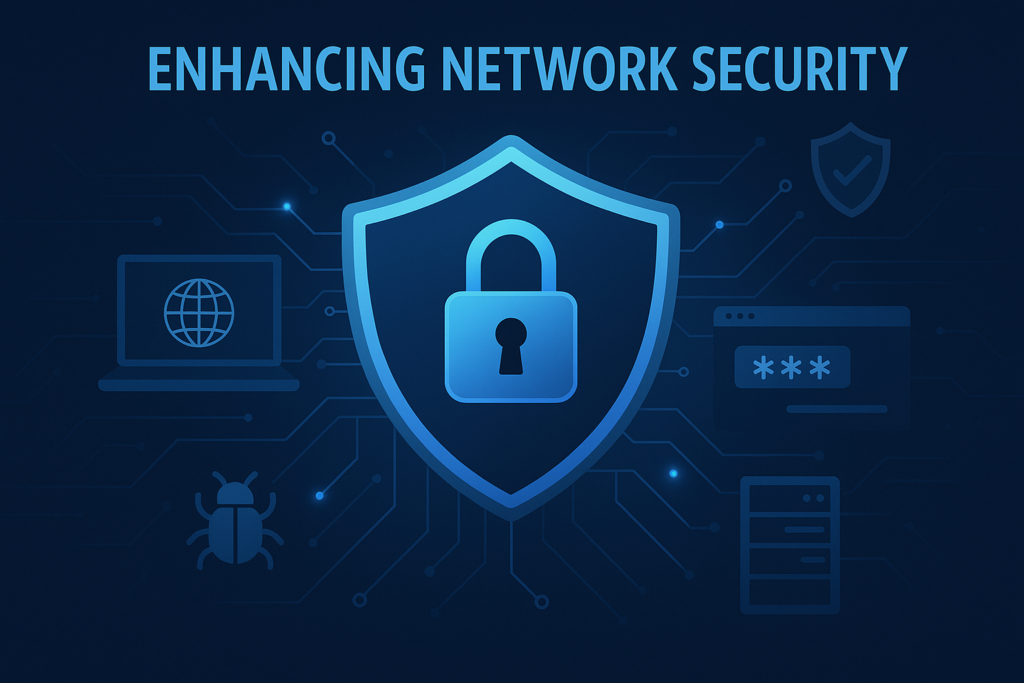In today’s digitally driven business landscape, network security is no longer optional—it’s a necessity. Cyber threats are growing in complexity, targeting vulnerabilities that can cripple operations, compromise sensitive data, and damage brand trust. Implementing a multi-layered approach to network security is the most effective way to safeguard your business against evolving cyberattacks.
Understanding the Cyber Threat Landscape
The modern threat landscape includes a wide range of attacks, from phishing and ransomware to DDoS attacks and insider threats. As businesses adopt more cloud-based solutions and remote work models, the attack surface expands, giving cybercriminals more opportunities to infiltrate networks.
Hackers no longer rely solely on brute-force techniques; instead, they leverage advanced persistent threats (APTs) and social engineering to bypass even the most robust firewalls. This makes proactive network security not just a protective measure, but a strategic imperative.
1. Implementing a Zero Trust Architecture
One of the most effective strategies to prevent cyber threats is adopting a Zero Trust security model. This approach operates on the principle of “never trust, always verify.” Every access request—whether it originates from inside or outside the network—is authenticated, authorized, and continuously validated.
Zero Trust reduces the risk of lateral movement within the network if a breach does occur and enforces strict access controls to sensitive systems.
2. Continuous Network Monitoring and Threat Detection
Proactive network monitoring tools offer real-time visibility into your IT infrastructure. They help detect anomalies, flag unusual behavior, and provide automated alerts. This early detection enables IT teams to isolate and neutralize threats before they escalate.
Behavioral analytics, intrusion detection systems (IDS), and security information and event management (SIEM) platforms are essential components of an effective monitoring strategy.
3. Regular Software Updates and Patch Management
Outdated systems and unpatched software are prime targets for attackers. Routine patch management ensures that security flaws are closed before they can be exploited. Automating this process reduces the risk of human error and ensures consistency across all devices and applications.
Timely updates not only defend against known vulnerabilities but also align with compliance standards across industries.
4. Employee Education and Security Training
A well-informed workforce is one of your strongest lines of defense. Cybersecurity training programs should be mandatory for all employees and updated regularly to address new threat tactics.
Training should cover:
- Recognizing phishing attempts
- Proper password hygiene
- Reporting suspicious activity
- Securing personal devices used for work
When employees understand their role in protecting company data, they are less likely to fall victim to social engineering attacks.
5. Encrypted Communications and VPN Usage
Encrypting data in transit and at rest is crucial. Virtual Private Networks (VPNs) provide a secure tunnel for remote employees to access company resources. By encrypting all data transmitted over the network, VPNs minimize the risk of interception by malicious actors.
For businesses with remote teams or hybrid work models, VPNs are an essential component of secure connectivity.
6. Multi-Factor Authentication (MFA)
Implementing Multi-Factor Authentication adds an extra layer of security to user logins. Even if a password is compromised, unauthorized access is blocked unless the second authentication factor (e.g., a mobile device or biometric input) is presented.
MFA should be deployed across all endpoints, cloud services, and internal systems.
7. Backups and Incident Response Planning
Even with the best defenses, breaches can still occur. A solid incident response plan ensures your team knows how to act swiftly and decisively. Regular data backups, both on-site and in the cloud, allow for recovery with minimal downtime.
Make sure backup systems are tested frequently, and store backup copies offline to protect against ransomware encryption.
As cyber threats grow more sophisticated, network security must evolve to stay one step ahead. Implementing a comprehensive security strategy that combines technology, training, and policy is key to long-term protection and business continuity.
Cybersecurity is not a one-time investment; it’s a continuous process that adapts to new challenges and innovations. By prioritizing network security now, businesses can prevent costly breaches, avoid reputational damage, and maintain operational integrity.
If you are interested in learning more, schedule a call today.

